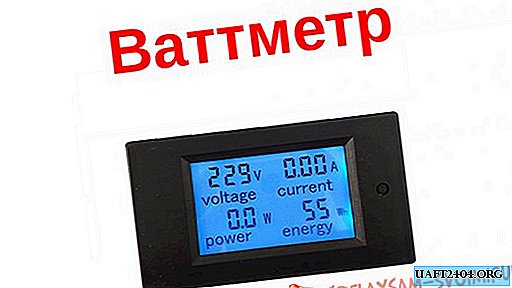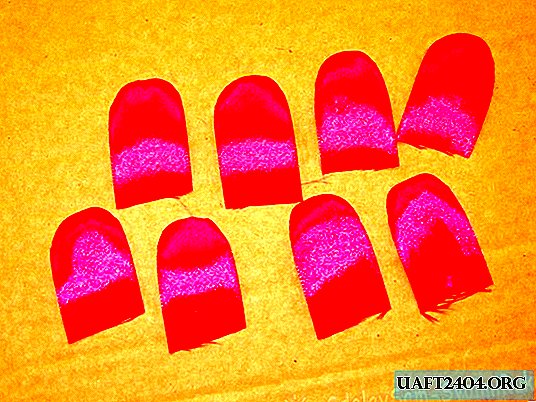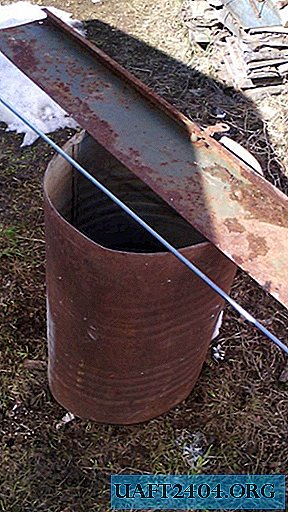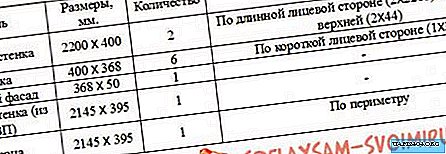Share
Pin
Tweet
Send
Share
Send





What can this model of power meter, except for measuring power:
1. Measure the parameters: voltage, current, active power, amount of energy.
2. To signal about an overload (excess of threshold power value, blinking of backlight), signaling of excess of device parameters set by the user (you can set the threshold for power output).
3. Save data to non-volatile memory and reset them if desired.
I want to emphasize that the device only measures active power, in fact, like any electric meter installed in your home. Reactive power is not taken into account. Reactive power is provided by capacitive and inductive loads.
Features of calculating active power.
Active power is calculated as: P = U * I * COS, where COS is the power factor.
For purely resistive loads (such as incandescent lamps, heating elements, etc.), the power factor is usually close to 1. For inductive and capacitive loads, the power factor can take a value from 0 to 1.
The power meter is controlled by one button.
1. Backlight control.
A short press on the button turns the backlight on or off. The backlight state is maintained when the power is turned off, that is, it is saved in non-volatile memory.
2. Setting the threshold power.
Press the button and hold it for about 3 seconds until “SET CLR” appears on the screen. The number that can be changed starts flashing. Then, by short pressing the button, you can change the value. To return to the initial state, you need to hold the button for more than 5 seconds.
3. Reset energy readings.
Press the button and hold it for more than 5 seconds until the energy digit starts flashing on the screen. A short press on the button again resets the energy value. After setting, you can return to the initial state by holding the button for more than 5 seconds.
The measuring element is located inside the power meter, no additional shunts and transformers are required. Also, the device does not require additional power. The circuit for switching on the device can be found on the back of the wattmeter. LOAD indicates the connected load.



The readings on the device are displayed by a liquid crystal matrix, it has a very stylish look. The matrix has a blue LED backlight.
The device is accurate, economical, has a large two-line display. It is very convenient in monitoring the network readings and the energy consumed by the connected devices. Incredibly easy to connect and install.
In the open spaces of Aliexpress there is also a similar model of a power meter. Wattmeter with current transformer. In the model discussed above, the shunt is built into the case and the maximum measurement current is up to 20 A. In the model with a current transformer, the measuring transformer itself is located outside the case and does not have a direct connection. It is enough to pass a wire through it, in which you need to measure the current. The advantage of this version of the wattmeter is a higher load current up to 100A which can come in handy.
Well, of the minuses - a slightly higher price.

Wattmeter specifications.
• Measurement voltage: AC 80 ~ 260 V
• Frequency: 45 - 65 Hz
• Measurement accuracy: 1.0 grade
• Measurement current: AC 0 ~ 20 A
• Measurement power: 0 ~ 22 kW
• energy measurement range: from 0 to 9999 kWh
• Operating temperature: -10 ° C ~ 65 ° C
• Working humidity: 35 ~ 85% RH
• Size: 90x50x25 mm (rounded values. For exact values, see the figure below).

Contents of delivery:
Wattmeter - 1 pc.
Manual (in English and Chinese) - 1 pc.
Wattmeter 20A (shunt) - //ali.pub/m1tj6
Wattmeter 100A (transformer) - //ali.pub/1q0x8
Share
Pin
Tweet
Send
Share
Send











